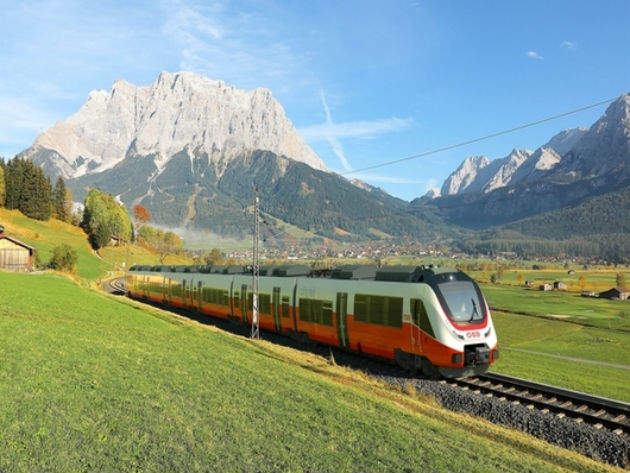

Reports have surfaced of a potential merger between Siemens and Bombardier, where the companies would pool their train manufacturing businesses into a single joint venture, creating an organisation with combined sales of $16bn. Such is the seriousness of the situation, Bombardier's shares rose nearly 7% when the story broke in April, while Siemens too witnessed a high jump.
The news has broken through the barrier of industry press into the pages of mainstream publications and websites, such as the BBC and Reuters, again underlining its potential. The desire, it seems, is to better compete with the Chinese state-backed rail giant CRRC, formed officially in June 2015 through the merger of China Northern Rolling Stock Company (CNR) and China Southern Rolling Stock Company (CSR).
CRRC has moved swiftly to impose itself on the markets. Last October, it was labelled the as “largest rail vehicle manufacturer in the world by far” by independent rail industry consultancy firm SCI Verkehr, which added that “CRRC generates more revenue from new vehicles than the five next largest companies together”. And now, with government support, CRRC is trying to gobble up even more international markets.
Sim Harris, editor of British news site Rail News, was quoted as saying earlier this year: “If there is any truth in these rumours, my feeling is that they have been prompted by the merger of two large firms in China to create CRRC. This company is quite a formidable force and it is understood that they are eyeing contracts in Europe.”
In September last year, more evidence emerged from SCI Verkehr, when the company reported that “More than 90% of all high-speed trains are currently being delivered by only three manufacturers. CRRC alone covers two-thirds of all current deliveries”.
That is serious competition, but how might a Siemens-Bombardier merger work, and could the hurdles prove too high to overcome?
Speculation and rumour
It must be noted that neither Siemens nor Bombardier are commenting on these speculations, as is often the case with such stories. The situation first came to light through sources claiming to be close to the matter, but despite attempts from this publication and other news agencies, high commands at Siemens and Bombardier Transportation – of which, the latter reported a turnover of $7.5bn last year – are not offering an official line.
This leaves the path open to speculation and rumour.
Laurent Troger, Bombardier Transportation CEO, did, however, have this intriguing response when pressed on the matter in Montreal in May: “We have to understand that the Chinese are looking to compete outside of China and they will bring their specific dynamics to this market.
“As far as we are concerned, we will keep positioning ourselves as the leading-edge provider that will optimise the total cost of ownership for our customers. We consider that we have the best technology and the best products, and we want to maintain our leadership in delivering the highest value for our customer.” Does the aim of becoming the “leading-edge provider” require an agreement with Siemens? Or could Bombardier go it alone?
The merged joint venture (JV) would be formidable but there are a number of issues that could trip up the deal, including anti-trust concerns in Europe – laws which aim to prevent companies from restricting competition – political resistance and an apparent disagreement over which firm would maintain control of the new JV. Also, what could this mean for job losses? That is sure to be a somewhat substantial obstacle.
Earlier this year, Reuters quoted a source with supposed knowledge of the negotiations as saying: "It could go fast, it could be very drawn-out or it could fail. It's completely open,” while another added, “On a country-by-country basis the deal looks difficult to pull off in Europe, and that's why it has not happened over the past 20 years.”
On the whole, this is due to doubts over the competition remaining in the wake of such a massive merger. Dario Struwe, antitrust lawyer at law firm FPS, told Reuters: “Besides Alstom, no real competitor would remain in Europe as long as the Chinese haven't arrived.”
Not one, but two joint ventures?
These doubts have not halted talks. Indeed, reports circulating in June stated that Siemens and Bombardier are in fact looking at a potential second joint venture – one for rolling stock, for which Bombardier would have overall control, and the other for signalling, led by Siemens.
Ralf Thomas, Siemens chief financial officer, said in May that it’s “obvious there’s a lot of consolidation going on”, perhaps hinting that an agreement is in the offing. If that proves to be true, what about Alstom? Pitted against the combined power of Siemens-Bombardier, as one London-based analyst told reporters earlier this year, Alstom could soon become “the loser in the scenario”.
However, as long as company executives remain tight lipped, much is hearsay. Any deal could conceivably fall apart – Siemens and Bombardier have discussed merger plans in the past, without success – but the rumours are persistent. The fact that both companies are refusing to comment and put the issue to bed is a sure sign that there’s more to this than pure speculation.



